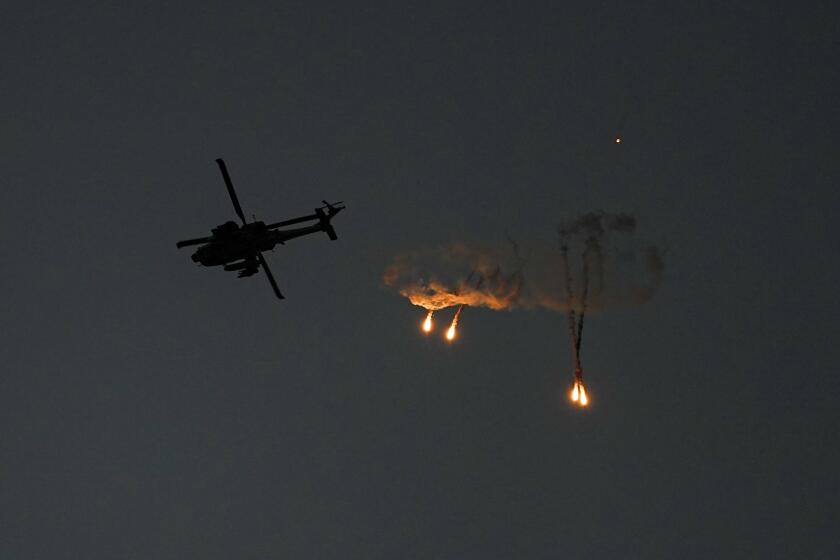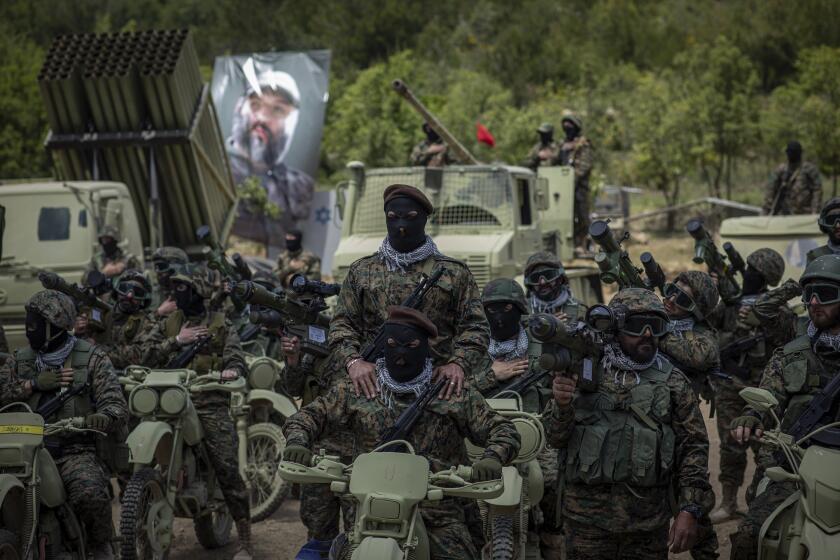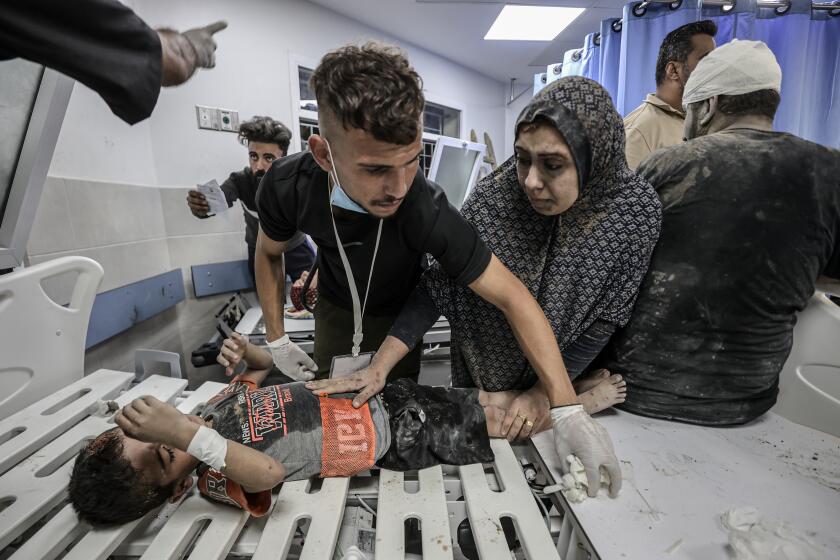
- Share via
KHAN YUNIS, Gaza Strip — The Israeli military raided the Gaza Strip’s largest hospital early Wednesday, conducting what it called a “precise and targeted operation against Hamas in a specified area” of the facility, which has been the site of a standoff with the ruling militant group.
Israeli authorities claim the militants conceal military operations in Shifa Hospital. But with hundreds of patients and medical personnel inside, the military has refrained from entering.
In recent weeks, the Israel Defense Forces have publicly warned that such use of the hospital “jeopardizes its protected status under international law.” On Tuesday, military officials conveyed again to Gaza authorities that all military activity in the hospital must cease within 12 hours.
“Unfortunately, it did not,” the military said.
Hamas has denied the Israeli accusations that it uses the hospital for cover.
Israeli military officials gave no further details but said they were taking steps to avoid harm to civilians.
The operation unfolded after the military seized broader control of northern Gaza on Tuesday, including capturing the territory’s legislative building and its police headquarters, in gains that carried high symbolic value in the country’s quest to crush Hamas.
In a nationally televised news conference, Defense Minister Yoav Gallant said that Hamas had “lost control” of northern Gaza and that Israel made significant gains in Gaza City.
But asked about the time frame for the war, Gallant said: “We’re talking about long months, not a day or two.”
One Israeli commander in Gaza, identified only as Lt. Col. Gilad, said in a video that his forces near Shifa Hospital had seized government buildings, schools and residential buildings where they found weapons and eliminated fighters.
The army said it had captured Gaza’s legislative building, the Hamas police headquarters and a compound housing Hamas’ military intelligence headquarters. The captured buildings carry high symbolic value, but their strategic value was unclear. Hamas fighters are believed to be positioned in underground bunkers.

For days, the Israeli army has encircled Shifa Hospital. Hundreds of patients, staff and displaced people were trapped inside, with supplies dwindling and no electricity to run incubators and other lifesaving equipment. With refrigeration out for days, morgue staff on Tuesday dug a mass grave in the yard for more than 120 bodies, officials said.
Hamas’ attack on Israel has hardened the settler movement. Increasing violence in the West Bank threatens to open another front in the conflict.
Elsewhere, the Palestinian Red Crescent Society said Tuesday that it had evacuated patients, doctors and displaced families from another Gaza City hospital, Al Quds.
Israel has vowed to end Hamas rule in Gaza after the militants’ Oct. 7 attack in Israel, in which they killed at least 1,200 people, mostly civilians including children and the elderly, and took roughly 240 hostages. Hamas’ military leader has said the attack was partly in response to Israel’s 16-year blockade of Gaza and violence against Palestinians.
The Israeli government has acknowledged it doesn’t know what it would do with the Palestinian territory after a Hamas defeat.
The Israeli onslaught — one of the most intense bombardments so far this century — has been disastrous for Gaza’s 2.3 million Palestinians.
More than 11,200 people, two-thirds of them women and minors, have been killed in Gaza, according to the Palestinian Authority Health Ministry in the West Bank city of Ramallah. About 2,700 people have been reported missing. The ministry’s count does not differentiate between civilian and militant deaths.
Almost the entire population of Gaza has squeezed into the southern two-thirds of the tiny territory, where conditions have been deteriorating as bombardment there continues. About 200,000 fled the north in recent days, the United Nations said Tuesday, but tens of thousands are believed to remain.
A Times special correspondent in Gaza offers a personal account of living in a place where nowhere feels safe.
The U.N. agency for Palestinian refugees said Tuesday that its fuel storage facility in Gaza is empty and that it will soon end relief operations, including bringing limited supplies of food and medicine in from Egypt for more than 600,000 people sheltering in schools and other facilities in the south.
“Without fuel, the humanitarian operation in Gaza is coming to an end. Many more people will suffer and will likely die,” said Philippe Lazzarini, the commissioner-general of the agency known as UNRWA.
Lebanon-based Hezbollah is holding back from all-out war with Israel for now — but chances of a dangerous miscalculation by either side are high.
Israeli defense officials, who repeatedly rejected allowing fuel into Gaza, saying Hamas would divert it for military use, changed course early Wednesday. Israel will allow some 6,340 gallons of fuel into the besieged Gaza Strip for humanitarian operations, officials said.
The Coordinator of Government Activities in the Territories, the Israeli defense body responsible for Palestinian affairs, said it would allow U.N. trucks to refill at the Rafah crossing on the Egyptian border later Wednesday. It said the decision was in response to a request from the U.S.
Plight of hospitals
Fighting has raged for days around Shifa Hospital, a complex several city blocks across at the center of Gaza City that has now “turned into a cemetery,” its director said in a statement.
The Health Ministry said 40 patients, including three babies, have died since Shifa’s emergency generator ran out of fuel Saturday. An additional 36 babies are at risk of dying because there is no power for incubators, according to the ministry.
The Israeli military said it had started an effort to transfer incubators to Shifa. But they would be useless without electricity, said Christian Lindmeier, a World Health Organization spokesman.
After a hospital blast in Gaza, doctors struggling to save lives amid danger and dwindling supplies say they and the medical system are near collapse.
The Health Ministry proposed evacuating the hospital with the supervision of the International Committee of the Red Cross and transferring the patients to hospitals in Egypt, but has not received any response, ministry spokesman Ashraf Qidra said.
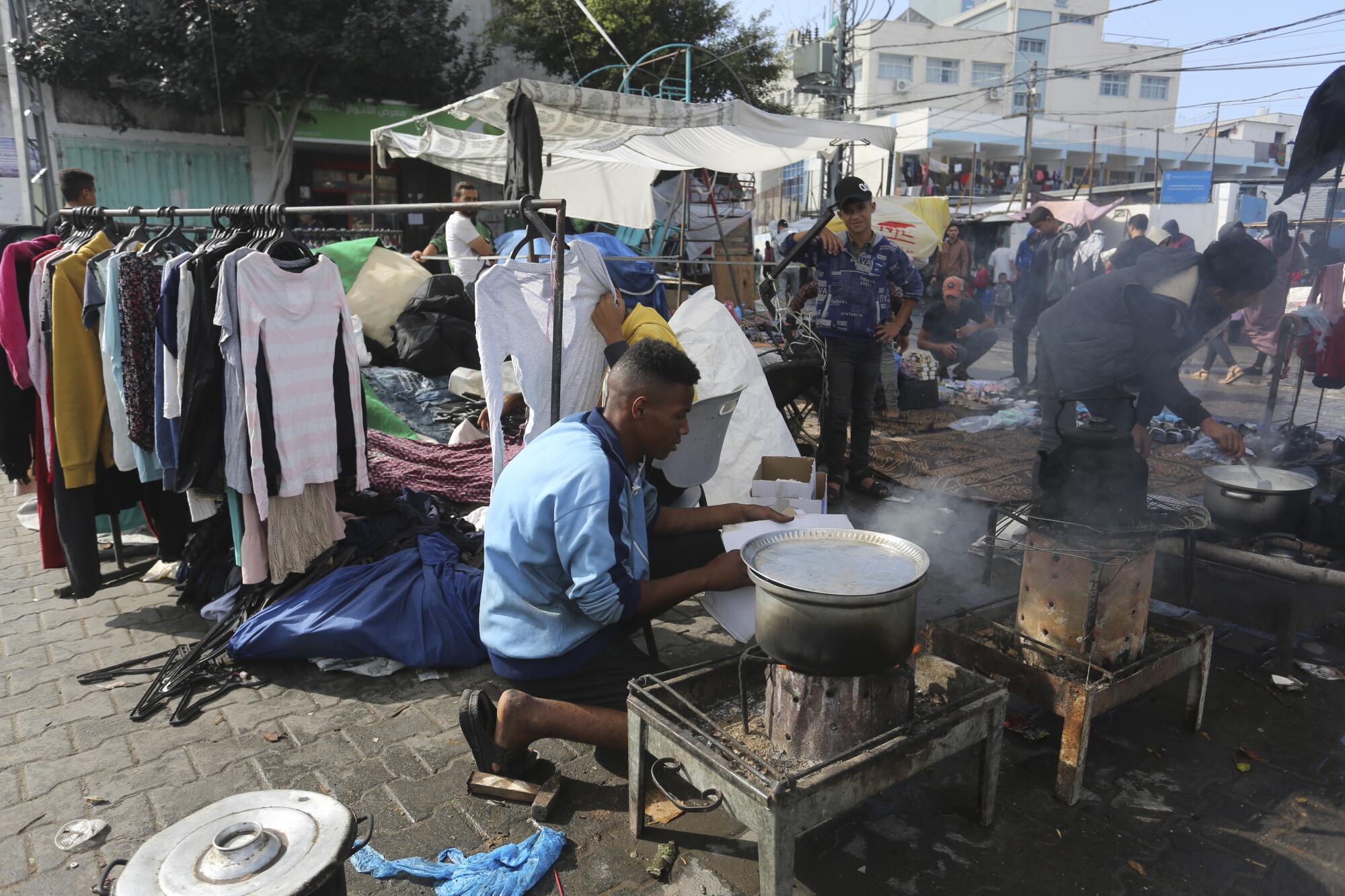
Although Israel says it is willing to allow staff and patients to evacuate, some Palestinians who have made it out say Israeli forces have fired at evacuees.
Israel says its claims of a Hamas command center in and beneath Shifa are based on intelligence but has not provided visual evidence to support them. Denying the claims, the Health Ministry in Gaza says it has invited international organizations to investigate the facility.
The evacuation at the Al Quds Hospital followed “more than 10 days of siege, during which medical and humanitarian supplies were prevented from reaching the hospital.”
In a post on X, formerly Twitter, it blamed the Israeli army for bombarding the hospital and firing at those inside.
The White House’s National Security Council spokesperson, John F. Kirby, said the U.S. has unspecified intelligence that Hamas and another Palestinian militants use Shifa and other hospitals and tunnels underneath them to support military operations and hold hostages.
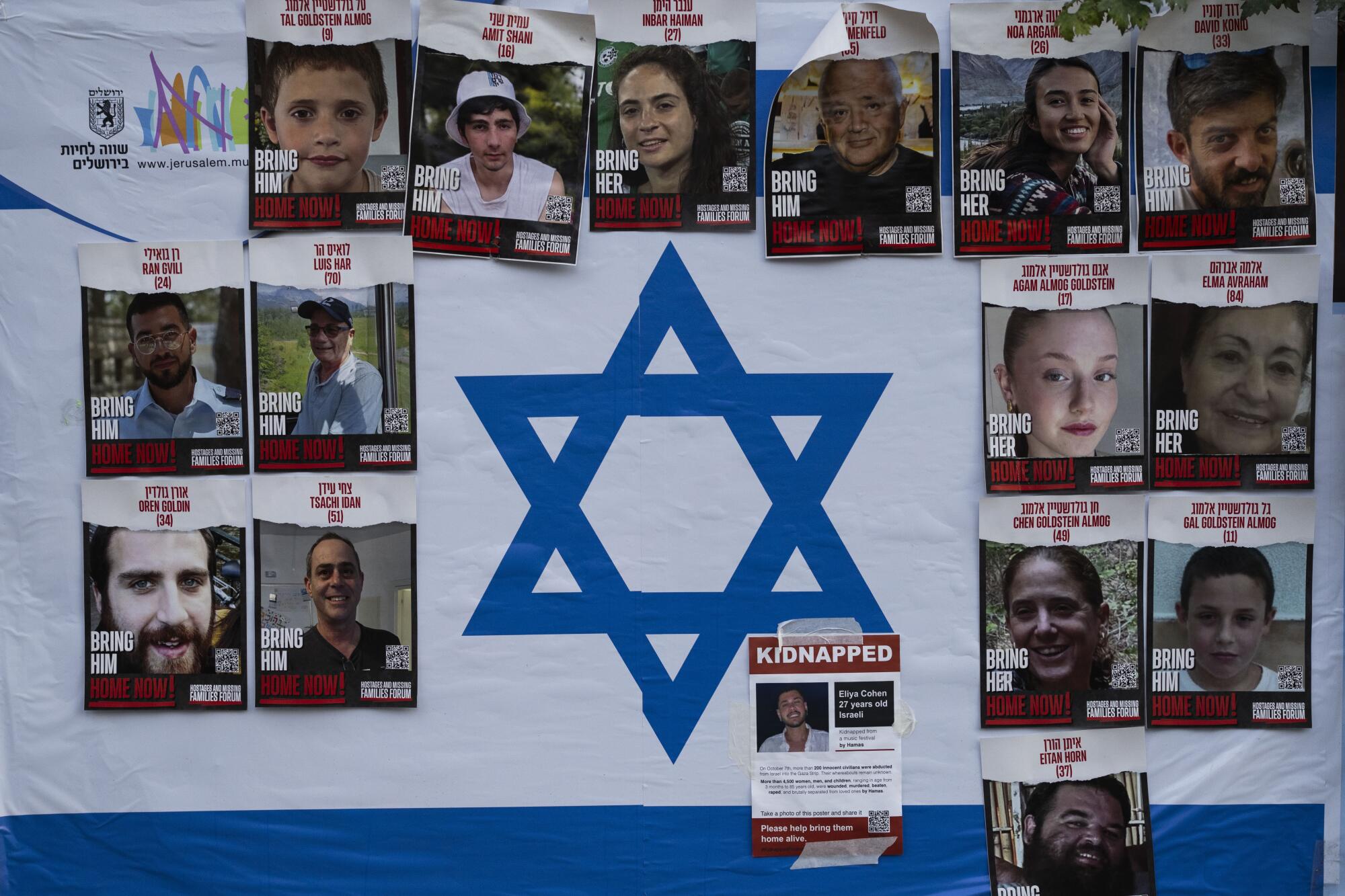
The intelligence is based on multiple sources, and the U.S. independently collected the information, a U.S. official said, speaking on condition of anonymity to discuss sensitive matters.
Kirby said the U.S. doesn’t support airstrikes on hospitals and does not want to see “a firefight in a hospital where innocent people” are trying to get care.
March for hostages
Families and supporters of the estimated 240 people Israel says are being held hostage by Hamas started a protest march from Tel Aviv to Jerusalem. The plight of the hostages has dominated public discourse since the Oct. 7 attack, with solidarity protests held across the country. The marchers, who expect to reach Jerusalem on Saturday, say the government must do more to bring home their loved ones.
Israel-Hamas war: In a national vigil of sorts, Israelis hope for the return of more than 220 people seized by militants and believed held in Gaza.
“Where are you?” Shelly Shem Tov, whose son, Omer, 21, is among the captives, called out to Israeli Prime Minister Benjamin Netanyahu.
“We have no strength anymore. We have no strength. Bring back our children and our families home.”
Battle in Gaza City
Independent accounts of the fighting in Gaza City have been nearly impossible to gather, as communications to the north have largely collapsed.
Videos released by the Israeli military show troops moving through the city, firing into buildings; bulldozers push down structures as tanks roll through streets surrounded by partially collapsed towers.
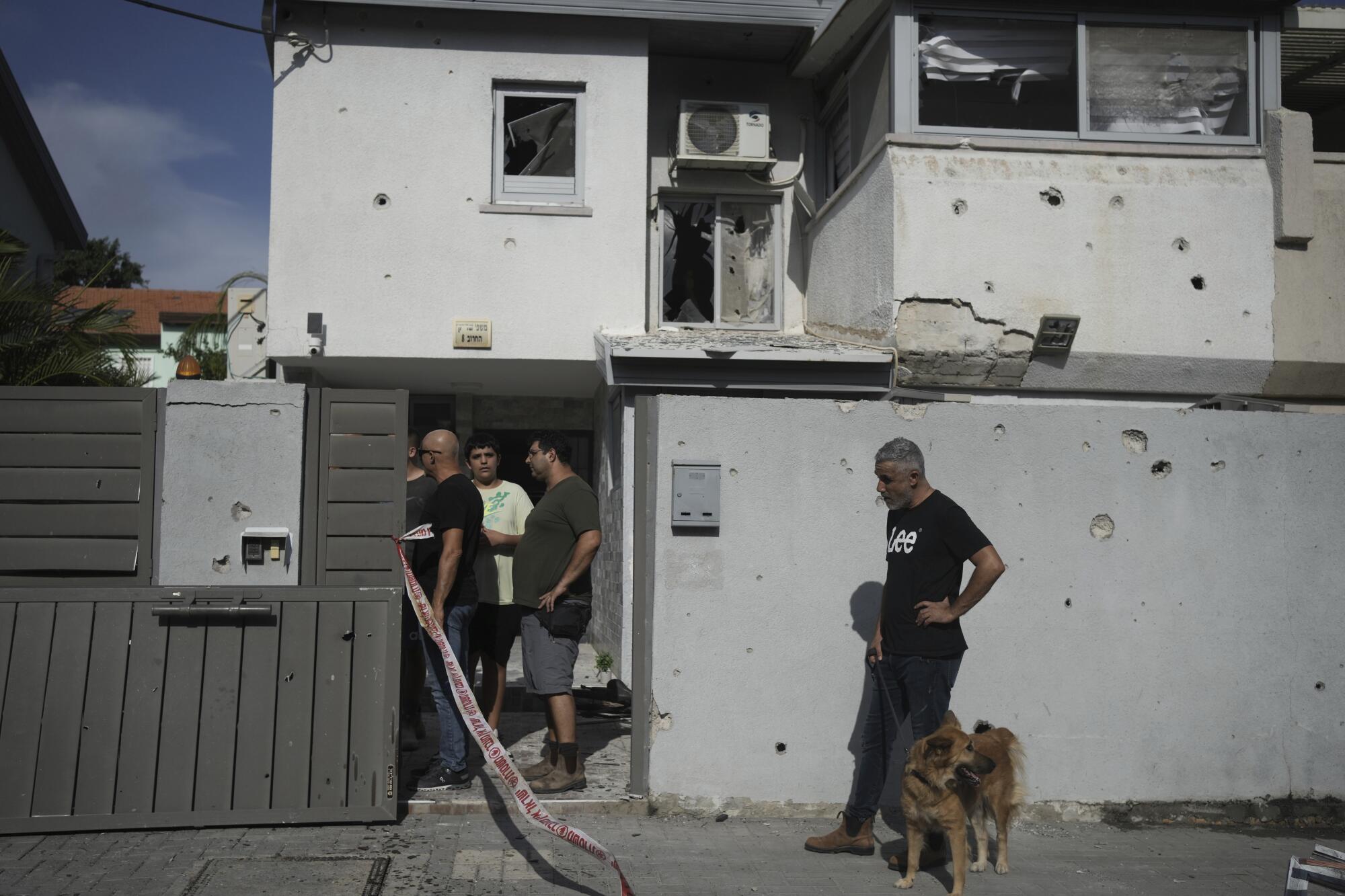
The videos portray a battle where troops are rooting out pockets of Hamas fighters and tearing down buildings they find them in, while gradually dismantling the group’s tunnel network.
Israel says that it has killed several thousand fighters, including important mid-level commanders, and that 46 of its own soldiers have been killed in Gaza. Hamas rocket fire into Israel — constant throughout the war — has waned, though two people were wounded Tuesday in a rocket attack on Tel Aviv. Details of the Israeli account and the extent of Hamas losses could not be independently confirmed.
News Alerts
Get breaking news, investigations, analysis and more signature journalism from the Los Angeles Times in your inbox.
You may occasionally receive promotional content from the Los Angeles Times.
More to Read
Sign up for Essential California
The most important California stories and recommendations in your inbox every morning.
You may occasionally receive promotional content from the Los Angeles Times.

